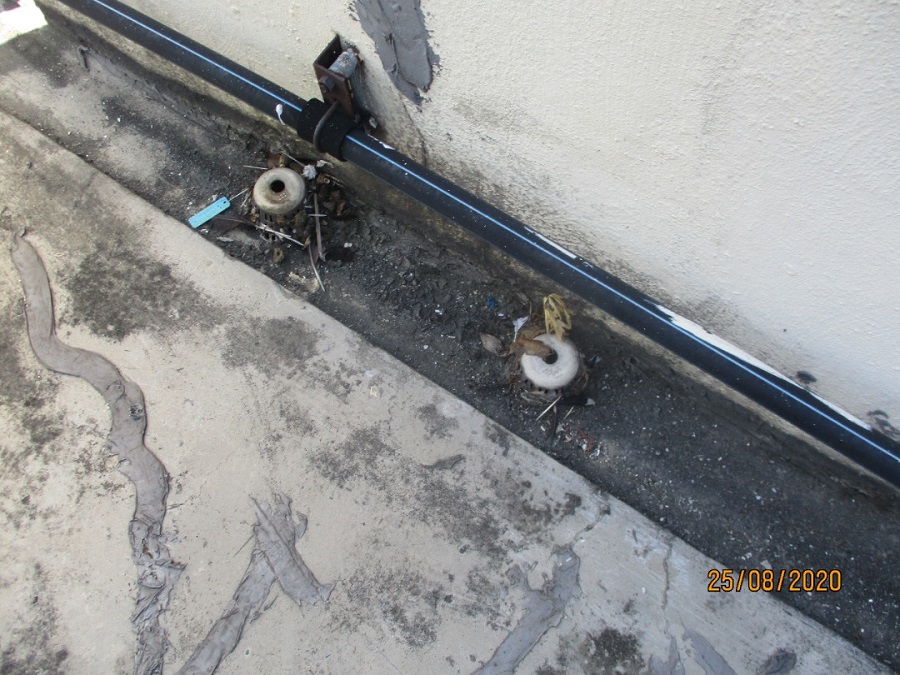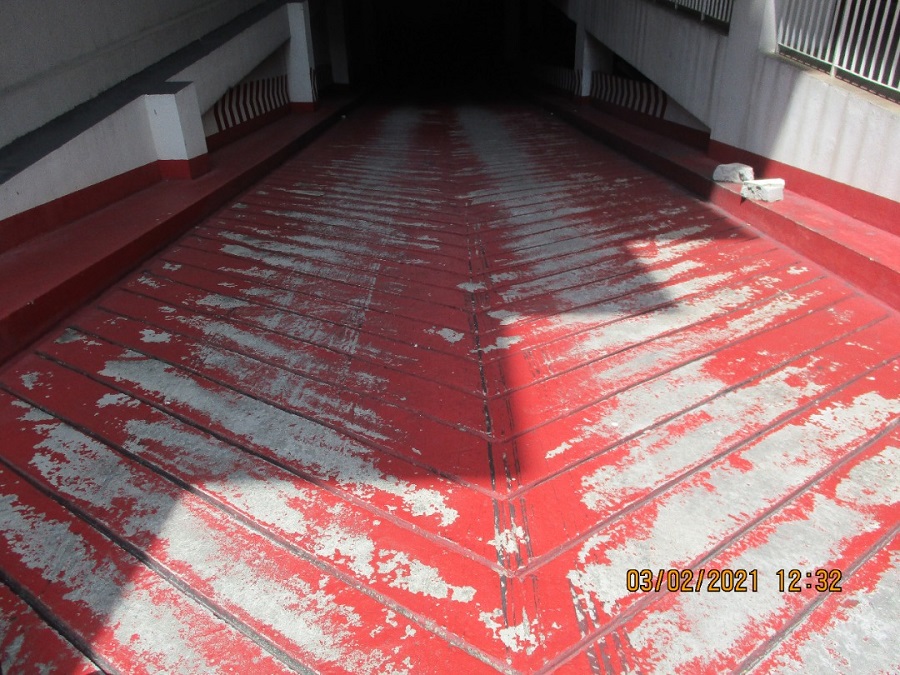
Imagine this. You’ve done all your research before you finally decide to buy into this property. Location? Checked. Pricing? Checked. Amenities and facilities nearby? Checked. Maintenance fee charge? Checked.
You have a trajectory of how much you have to pay and by when these payments must be made, and you have sorted it all out. You know that under the Housing Development Act (HDA), residential property owners have 24 months during the defect liability period (DLP) to get the developer to rectify any defects or faulty workmanship on the new property that has been handed over to you.
Read also
Different ways to check new and secondary market properties
Common defects in common areas
So you have a thorough inspection of your unit and have reported the defects to the developer so that the latter can fix the problems.
Everything seems to be on track and you have a place to call your own.
A few years down the road, you receive a letter from your management office. The building owners are taking the developer to court for allegations of severe construction defects such as water seepage issues in the carpark caused by the swimming pool built above it and the lift motors breaking down.
As one of the owners in the building, besides paying for the legal fees, you would also need to chip in for the repair fees because the maintenance fee and sinking fund collected over the years aren’t sufficient to cover these costs.
But then you ask, “What has this got to do with me? I am only responsible for my own unit, am I not? How am I involved in the problems of the lift motors and swimming pool? I use the swimming pool fewer than five times a year. Why do I have to chip in for the damage not even caused by me?”
Unfortunately, there is no wriggling out of this.
Defects in common areas — why owners have to pay
According to the Owner’s Manual & Guidebook 2.0 (OMG 2.0), co-authored by Chur Associates and EdgeProp.my, common property refers to the development area not comprised in any parcel or accessory parcel and is capable of being used or enjoyed by two or more strata unit owners.
These areas include the corridors, landscaped areas and gardens, swimming pools, gymnasiums, water tanks, equipment room, lift pits and motor rooms as well as the escape staircases and the functionality of fire-fighting systems and meeting rooms. This is where the maintenance fees you pay monthly go – towards the upkeep of these facilities.
Architect Centre Sdn Bhd director and accredited building inspector Anthony Lee Tee says most strata owners come into their properties focusing only on their own private and accessory parcels but neglect the fact they are also co-owners of the common properties.
He attributes this to a lack of knowledge and education on strata living. For instance, there are homeowners who have no idea what a Joint Management Body (JMB) or Management Corporation (MC) is and the importance of an Annual General Meeting (AGM).
In a strata development, there are some common properties which you can see every day such as the swimming pool or gym but there are also technical issues such as leaks, cracks, equipment failure and untested electrical installations which not every homeowner would have the knowledge to tackle.

“Furthermore, during that initial period when a new property is handed over, some of the common property areas may not be completed yet,” Lee tells EdgeProp.my, adding that owners should not just focus on their own units because when they buy into a strata property, they are essentially buying into the entire building.
He notes that many start to understand the problem only after the DLP ends, as that’s usually when the defects surface and they have to deal with the nightmare of resolving them.
Henry Butcher Malaysia (Mont Kiara) Sdn Bhd executive director Low Hon Keong concurs with Lee, saying that oftentimes, only when the JMB is formed, usually by which time the DLP is almost expiring, they discover all these common defects have not been ironed out. Then the JMB or MC has to dig into the sinking fund to repair these defects, which could have been repaired by the developer if the problems were detected in the early days.
“They (JMB or MC) will then have to engage independent accredited building inspectors to find the root cause of the issues and they will have to spend the money to fix them. All these charges come from the service charges or the sinking fund which is borne by the homeowners,” says Low.
Role of property manager
A responsible property management firm will not only manage and maintain a property, but instead, will go the extra mile of keeping track of the common area defects and inform the developer so the problems could be rectified at the early stage, says Low.
For instance, a weekly report by the property management company to the developer to reveal the findings when the team does their rounds are important to spot the defects in the first place.
Many may not be aware that a property manager can be appointed right from the delivery of vacant possession, but on the developer’s initiative, and few are willing to do that. But as awareness is raised, it is hoped that more homebuyers would learn the importance of seeking such responsible developers.
“We are not here to find fault with the developer or to point fingers at who is right and wrong. What we want to ensure is that there is check and balance. Sometimes, the developer’s project team is focused on the big things such as the mechanical and technical operations of the building and may miss out on the everyday and on-the-ground aspects of a property.
“For instance, we get feedback from residents on issues such as the chipping of tiles at the swimming pool or the landscaping which people usually do not notice until all the plants have wilted,” he highlights.
Low also observes that in the first six months when the inspections are carried out, the defect list can come up to a thousand over items and if these are not fixed in the beginning stage, it may lead to dispute and court cases later on which are costly and time-consuming.
“There are cases where we (property management company) come in more than one year after the keys have been handed over to the owners, and the JMB tells us that the DLP will be expiring in three months.
“We then have to rush to check through everything, and even then not all the defects can be identified and rectified in time,” he adds.
One challenge Low often faces is that the main contractor can get unhappy with the property management company as they feel that the property manager keeps on finding fault with them, but actually that’s not the case.
“If we were looking at short term and our plans were to manage these properties for one or two years, after which we washed our hands off, then we wouldn’t even have to bother executing the extra ground work and highlighting all these in the initial stage.
“It is because we intend to be here for the long run, and that is why all these procedures are being carried out. If there are defects detected later on, we are not the ones suffering but the owners who have to pay the price,” Low elaborates.
Developers now more willing to engage with owners and property managers
Low observes that developers nowadays are more open to discussions and feedback from property managers and owners as every party has a common goal of reducing hiccups in the early stage for long-term sustenance.



Some developers also realise that engaging with a property management company in the early stage prior to the handover helps them to have an extra pair of eyes and expertise to look through the property. This is especially for properties with a lot of facilities.
“No building comes in a perfect condition, and if every party works hand in hand to resolve these issues, it is the most ideal. There are developers out there who really have no intention to cheat their buyers but are accused of buying time and delaying the rectification past the DLP,” Low adds.
On the other hand, although more property owners are now aware of what strata living means, they may not know the correct channels for them to deal with issues that arise, Low notes.
Architect Centre’s Lee points out that it is not so straightforward, where one should just follow a checklist, but instead it needs to be done in close collaboration with the property manager or dedicated JMB members.
“Many owners are not aware of common property issues and do not get involved with the JMB, hence the few dedicated owners are burdened with carrying the heavy load. It is essentially being open and transparent to flush out and identify the defects and agree to a fixed schedule.
“Many JMBs just ignore the problems or owners just do not care or avoid involvement with the JMB when it is set up, but apathy, ignorance and selfishness are attributes that are not congruent to strata living ,” stresses Lee.
This story first appeared in the EdgeProp.my E-weekly on March 12, 2021. You can access back issues here.
Get the latest news @ www.EdgeProp.my
Subscribe to our Telegram channel for the latest stories and updates






